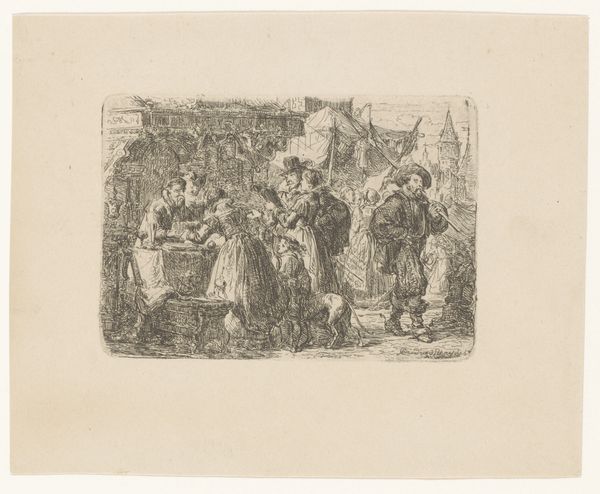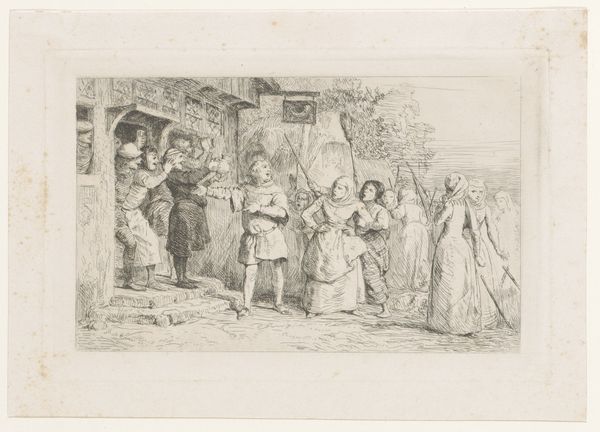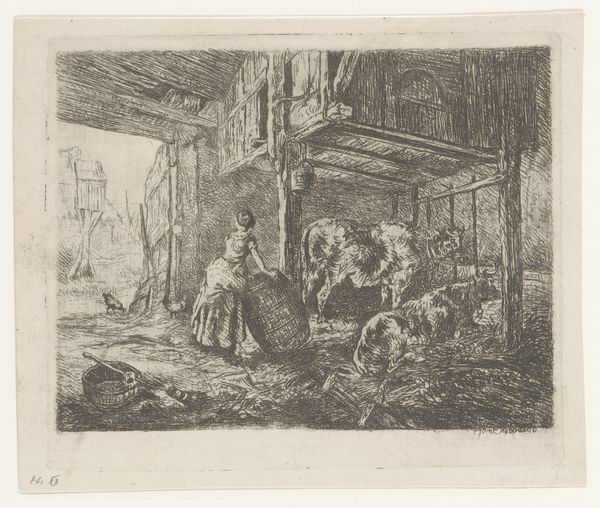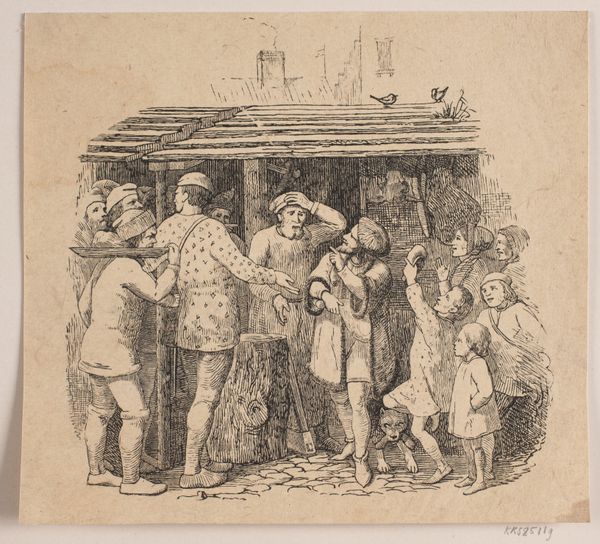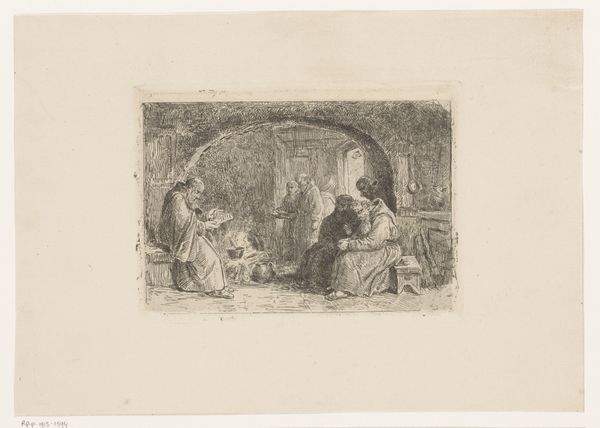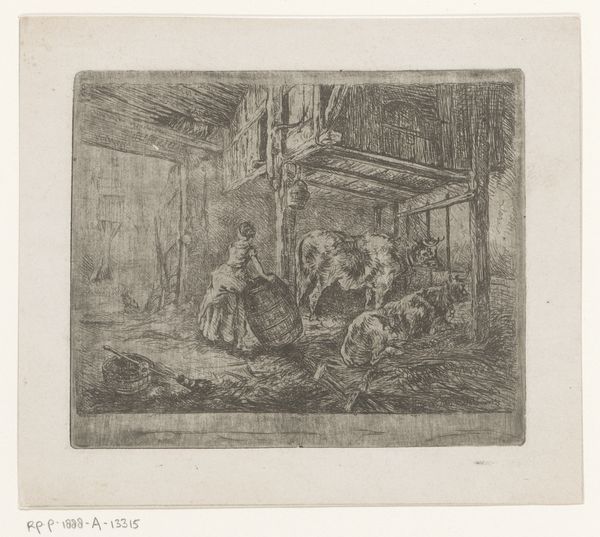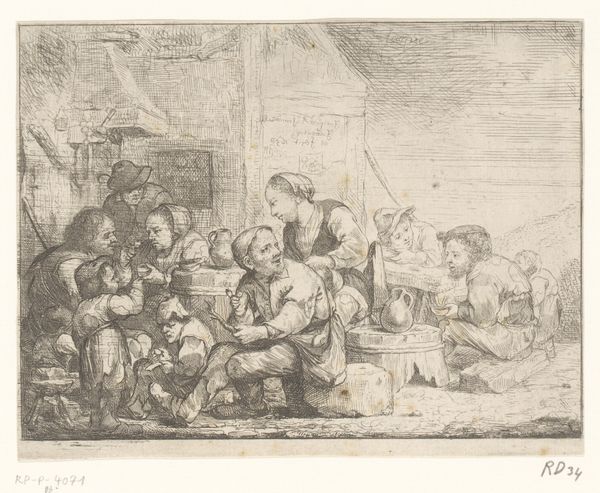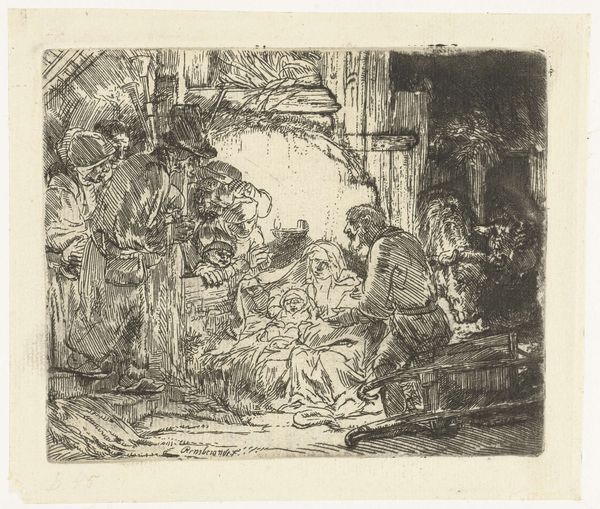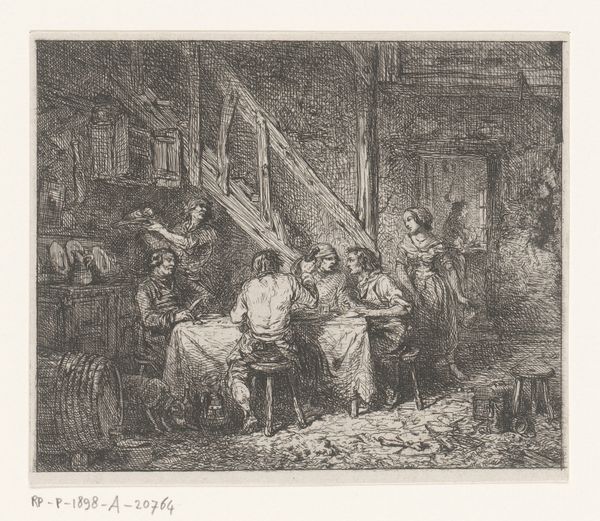
drawing, etching, paper, ink, pen
#
drawing
#
etching
#
paper
#
ink
#
pen
#
genre-painting
#
history-painting
#
watercolor
#
realism
Dimensions: height 163 mm, width 208 mm
Copyright: Rijks Museum: Open Domain
Curator: Looking at Henri Leys' etching, "Bekendmaking van de edicten van Karel V in Antwerpen," dating between 1825 and 1869, one is immediately drawn to the quiet intensity of the scene. The piece, rendered in pen and ink on paper, offers a fascinating window into a historical moment. Editor: My first impression is a bit somber, actually. It feels almost voyeuristic, as if we're eavesdropping on a tense exchange. The light is subdued, which definitely amplifies the mood, it does remind me of some works by Hogarth. Curator: The social and political undertones are, I believe, the heart of Leys’ project. It’s crucial to understand that this work invites us to reflect on Charles V's decrees in Antwerp and its impact on civic life, through imagery carefully cultivated to appeal to rising Belgian nationalism. It makes you wonder about the function of public spaces. Editor: I agree, but there's also an intimacy here. It almost feels like a stage setting and also this detailed inking creates such a richness of texture. I wonder if it intends to remind us that history is built from human interaction rather than these faceless grand narratives. You are compelled to feel rather than just intellectually recognize its value. Curator: Leys was very meticulous. He aimed to recapture the atmosphere and materiality of the past through art. However, one must also think about how this interpretation can be easily co-opted into larger discourses of identity. The Rijksmuseum, like any large cultural institution, plays a vital part in both preserving art and assigning to its art historical function and political purpose. Editor: I hadn't considered it that way. But this subtle balance of the personal versus historical narrative keeps intriguing me. Perhaps because it touches a basic truth that historical narratives aren't divorced from human emotion but it all feels like such a human story when it comes down to it, right? Curator: Exactly! The scene's appeal arises not just from historical accuracy, but from the suggestion that public policy intimately affects everyday lives, shaping social bonds. Leys provides that unique link in the evolution of Belgium's political thought. Editor: It's like history whispering in your ear through the lines and shadows. So thanks to both the museum and the artist for this rather curious time-travel.
Comments
No comments
Be the first to comment and join the conversation on the ultimate creative platform.
